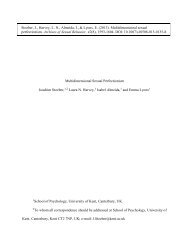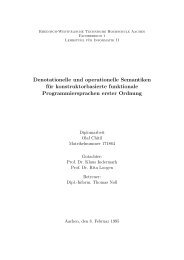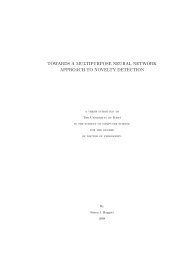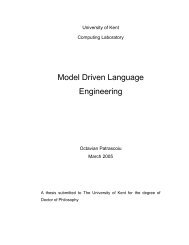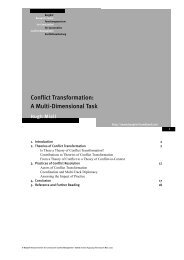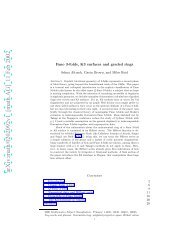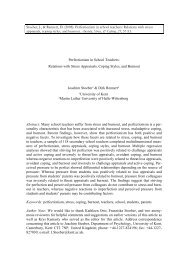Download (640Kb) - University of Kent
Download (640Kb) - University of Kent
Download (640Kb) - University of Kent
You also want an ePaper? Increase the reach of your titles
YUMPU automatically turns print PDFs into web optimized ePapers that Google loves.
GRIDS AND FRAMES<br />
Fig. 5 Heinrich Tessenow, Festspielhaus,<br />
Hellerau, Site Plan. Courtesy <strong>of</strong> Fabian<br />
Zimmermann, Berlin.<br />
It is here that the theme <strong>of</strong> the grid is encountered for the first time. The south side <strong>of</strong> the<br />
square is enclosed by a white-painted timber pergola structure, punctuated on each side<br />
by two squat, compact, square-plan houses. (Fig. 6) These have attic storeys set into<br />
their hipped, tiled ro<strong>of</strong>s, with a gabled dormer window on each <strong>of</strong> the four sides. The<br />
ground floor fronts <strong>of</strong> the houses have rendered walls which are co-planar with the rear,<br />
enclosing walls <strong>of</strong> the pergola structure, while the three bays <strong>of</strong> the entrance porch<br />
provide spatial rhythm within the matrix <strong>of</strong> the pergola. The pergola motif would have<br />
been familiar to the bourgeois German at the turn <strong>of</strong> the century. Die Gartenlaube<br />
(pergola) was the title <strong>of</strong> one <strong>of</strong> the most successful magazines read by the middle class;<br />
its cover featured an iconic pergola - frequently decked out in Semperian festive mood -<br />
and it communicated bourgeois comfort before it suggested, at the start <strong>of</strong> the twentieth<br />
century, more overtly political, Reformist aims. Indeed, at mid-century the pergola motif<br />
was so popular that it was used as frontispiece decoration to many books. Tessenow’s<br />
gridded frame does not attempt to mimic natural, arboreal form; instead it is an aesthetic<br />
reduction <strong>of</strong> a trabeated structure, united with a simple ‘unconscious’ or vernacular<br />
empathy that the workman would feel with his tools and his materials. His writings, like<br />
his buildings, are themselves always simply phrased and seem never to touch on the<br />
4



